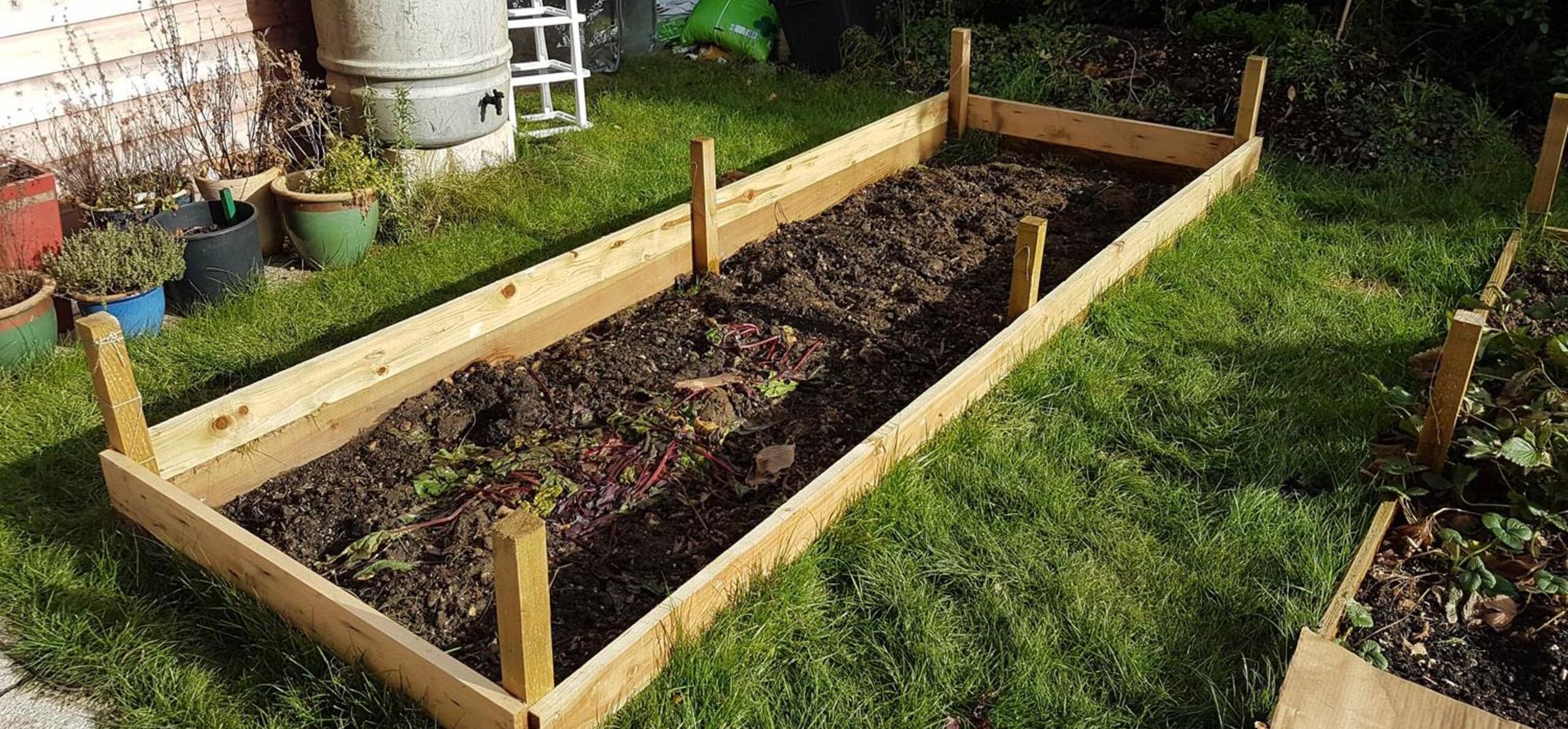Gardening is a great way of getting outdoors and catching a bit of sunshine when you can. Join Julian from the Reading Museum team as he shares how he tends to his winter garden.
A good way of getting some exercise and sunlight in these darker months is to get outside. Although not as much grows in the garden at this time of year, there are still things to do and see!
One way of growing your own food is to make a vegetable patch, and you can do this by creating a raised bed. This raises the plants to a height that's easier to work with and improves the drainage. These can be bought as self-assembly kits or you can get some gravel boards and stakes and make something similar to the image below!

If you want to do it the easy way, then leave the grass in place and cover with a mix of compost and soil. Or you can do it the hard way and dig out the grass and about a foot of soil. Many lawns seem to have hidden gravel and stones not far under the surface which can make it a hard job! When I dug mine out, I had enough stones to make a rockery, and found other strange things such a plastic penguin and a marble as I went along. Think of it as archaeology!
If you want to grow long-rooted vegetables, such as carrots, then it’s definitely worth digging down a bit. As you can see, I’ve left the stakes quite long on my bed and am building it up each year as I go along. Ideally you’d have the stakes on the outside of the planks but I find it easier to cut the grass like this.
Last year, I dug out two beds and had crops of potatoes, garlic, peas, runner beans, carrot, lettuce, and beetroot. Digging out the bed was the hardest part, then it’s just a matter of deciding what you want to grow, keeping an eye on the weeds, and doing a bit of watering. A permanent strawberry patch could also be planted in one. A lot of strawberries grow new plants via ‘suckers’ so you don’t need that many to start with. My son was in charge of the strawberry patch and we had a good crop even from this first year. Don’t make the mistake I made of planting them too close together though; I had a fungal disease appear later on and am going to be starting a new one this year on a new bed.
If you didn’t get a chance to cut plants back in the autumn, then you can still do that throughout the winter. Lavender can be cut back hard, just leaving a few leaves on each stem. This stops them forming a hollow in the middle of the plant. I tend to leave hollow stems such as sunflowers and other annuals over the winter as they’re a good home for insects. Other people like to get rid of them as they can be a source of plant diseases and pests for the following year. But that’s the great thing – it’s your garden and you can do as you please!

Generally the ground is too wet at this time of year for doing too much work, but if you do then try putting down some stout boards to work on, this helps spread the weight out a bit. If you squash all the spaces out of the ground then it will be harder for the water to drain off and it makes life harder for those beneficial creatures such as worms, which are constantly improving your soil. Incidentally don’t remove all the dead leaves from a lawn or bed, the worms apparently pull them down into the soil and help improve it (though I’ve never seen that actually happening)!
It’s also very beneficial to have some kind of covering over bare earth, this helps both stopping the nutrients being washed away and also gives the insects and fungi somewhere to live and move around under. You can use woodchip mulch in flower beds, which also helps keep the moisture in during the warmer months, and I use cardboard packaging over the vegetable beds when they’re not in use. Eventually the mulch and the cardboard rot away and become part of the soil and then you apply some more. I try to use cardboard that doesn’t have too much printing on it for that reason. You may find the mulch has been moved around a bit by birds that will be looking for the tiny creatures that live underneath. Jackdaws will do the same thing with moss on roofs, flinging them over the edge of the guttering in their search for food.
If you don’t have a garden, consider if you have space for pots. Vegetables, including potatoes, can be grown in all kinds of containers – plastic sacks, small dustbins (with drainage holes in the bottom), growbags and of course regular pots. If you are thinking of doing potatoes you need to get ‘chitting’ now – this is placing the seed potatoes in a cool, dry place with some light and letting them grow the little sprouting bits you sometimes see on a potato that you’ve kept for too long. These sprouty bits will become the shoots and roots when the potatoes are planted.
Thanks for joining us on our blog. Learn more about gardens, and how you can grow your own in Reading, in the further reads below!





